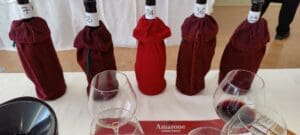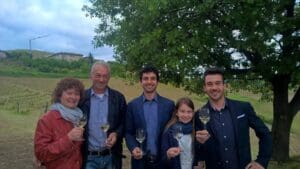One country that I hardly touched on is South Africa. This is a country with 330 years of wine production history, torn apart by fifty years of apartheid, and recently came out to be one of the promising economical zones in the upcoming decades. Fortunately, despite the many changes to political power, a very important monument of the South African wine industry remains standing today, the Groot Constantia estate.
Founded by the first colony governor for the Cape of Good Hope, Groot Constantia was the residence of Simon van der Stel and the first winery of South Africa. Already a viticulturist before he became the commander of the Dutch East India Company, Simon, naturally, planted grapes in his plantation along with other agricultural produces. This was consistent with the intention of the founder of the colony, Commander Jan van Riebeeck, and vine became one of the common sighting across Constantia.
While the climate around the cape was favourable for agricultural, the science of site selection eluded these early settlers. The decisions to plant vines were made largely on accessibility and convenience, and not from the careful observation of subterranean soil strata. Wine making culture was equally flawed as slave workers were known to pour all the harvest into fermentation vat without picking or sorting the ripe from unripe, and along with whatever earth that clung on to the berries. The resulting wines were unpalatable since fresh manure were often used to improve the quantity of the harvest.
But things were already very different in Groot Constantia some time in the 19th century. The sweet wine of Constantia was to be made with extraordinary care, making sure the grapes used were free from blemishes and properly removed from the stems and stalks. It was the only South African wine that could command a premium in the European market, alongside some of the most luscious wines known in that age.
Production stopped in the late 19th century before a revival in the 20th century. Now renamed as Grand Constance, the wine continues to be bottled in a short bottle with an elongated neck.
It was noted that Napoleon Bonaparte had regular shipments delivered to him each year in St Helena, where he spent his remaining days in exile. So much for his quote on drinking champagne in victory and defeat, he actually developed a sweet tooth in his final years. Another proof of the sweet wine used as a cure for the depressed can be found in Sense & Sensibility written by Jane Austen.
“I have just recollected that I have some of the finest old Constantia wine in the house that was ever tasted; so I have brought a glass of it for your sister. My poor husband! How fond he was of it! Whenever he had a touch of old cholicky gout, he said it did him more good than anything else in the world. Do take it to your sister.”
After the apartheid regime, South Africa seeks to recover from its disengagement with the world. Wine export started to grow but the most important representation of South African wines is none other than Pinotage. A variety unique to South Africa, cross cultivated from pinot noir and cinsaut (previously known locally, and perhaps incorrectly, as Hermitage). Ironically, even most South Africans I met cannot be absolutely certain how a pinotage should taste like.
When I first met pinotage four years ago it smelled like coffee, and like many others who tasted it that evening, we were damn convinced that pinotage was mocha from grapes. Was it a barista making the wine? Perhaps.
But further exploration into this variety and I learnt that this was a matter of style. Apparently some had considered it fashionable to age pinotage in heavily roasted oak barrels which imparted the smokiness that, together with the high ripeness of the fruit, developed an unique dark chocolate and coffee note.
I was thankful my later encounters were less roasty so they can show me what the grape is about. But even these wines took side. One, the raspberry like pinot camp. The other, a rustic rural cinsaut style.
It was only in November 2014, at a Groot Constantia tasting held by local distributor Stellez Vine, when I finally found a pinotage that can tell two sides of the story. Achieving the right balance between red fruits and rustic expression of both camps, I could detect the parent identities this variety has inherited along with the gentle aroma infusion of licorice and cinnamon. Thanks to the Shiraz that represented approximately five per cent of the blend.
I don’t know if I will see another pinotage that can interest me in the same way, but this is a land of great potential. Dark days are over, they can only get better from here.



